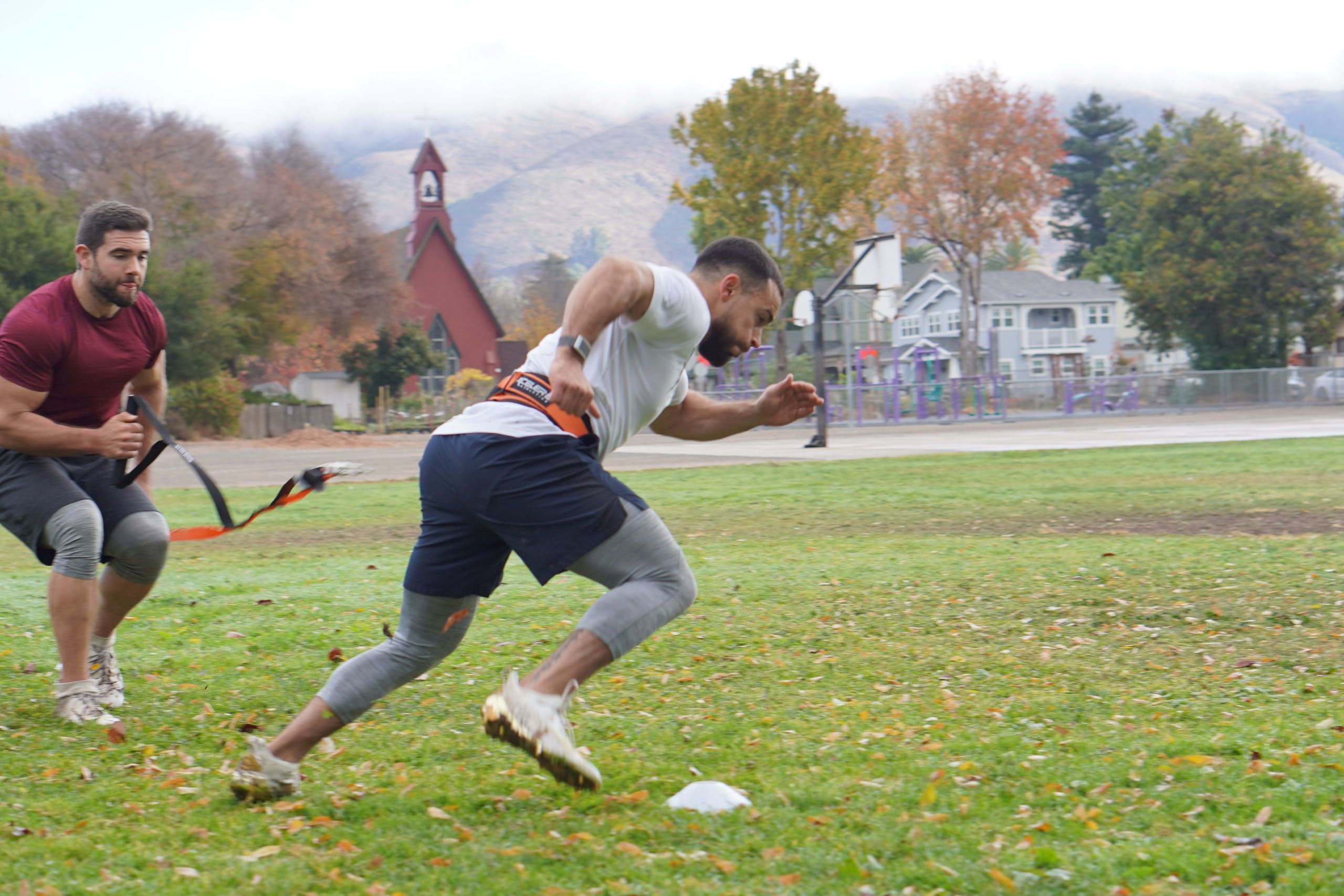The Key to Speed
By Albert Squires

What would you say if I told you that the fastest humans on the planet actually spend more time in the air than on the ground. For 9.58 seconds Usain Bolt is literally flying as he breaks the 100m world record. This phenomenon is called sprinting, and dorsiflexion is a major key to why humans like Usain Bolt can literally fly down the track.
As an athlete we are well versed in the simple fact, speed kills. When scouts are seeking to find the next big star athlete, speed is always top of mind. In turn many athletes do all they can to improve their speed, many of them struggling to see any change. Leaving one big question all athletes want to know, “How do I get faster?”
First let's talk about what makes someone like Usain Bolt fast. There are two major factors that stand out amongst all top sprinters and that is they have longer stride lengths and faster stride frequencies than their counterparts. So they not only hit the ground more often, but they create more force into the ground when they do. Which then causes them to be in the air more when at top speed, hence putting them in the air longer than on the ground during their sprints.
Now that we know what makes the fastest fast, how can we train to be one of the fastest, or at least improve your current speed? The key to developing top speed is increasing the amount of ground force you can create. Getting stronger and improving your running mechanics when it comes to your running cycle, arm mechanics and running angles will help you maximize your force output. Improving the ground force you create will naturally increase your stride length as you now create more force to propel you off the ground. It will also decrease your ground contact time, which then increases your stride frequency because you're now spending less time on the ground when you touch it.
So why don't we just focus on getting stronger if ground force is the key?
Imagine you have the most powerful pile driver but instead of having a steelhead that can break up any surface, you have a big fluffy cushion that disperses the power of the machine, making it ineffective. The way you apply force into the ground is no different, you need a strong head to apply force into the ground. This is why your ankle must be in a dorsiflexed position on contact. This position occurs when you raise your foot upwards toward the front of your leg. This puts the foot in a position to not only absorb the stopping forces of the ground, but also leaves the ankle in an ideal position to create an even greater force back into the ground, propelling the athlete in the desired direction.
One thing to remember when training top speed is, quality over quantity. You need to be well rested every sprint, and only sprint for a limited amount of times and total distance. Anything sub 95% effort doesn't do much for top speed development. So tracking times at different distances and striving to stay near those times is key. Longer rest for longer sprints, and if you see a drop in time move on to focus on different aspects of speed like acceleration for instance.
So here are 4 exercises to improve your ankle strength, stability and flexibility. These exercises wont naturally make you faster, but they will prime your ankle to be able to handle greater forces into the ground. So when you join the Elite Athlete Project, you’re primed and ready to reach that next level in your speed training
Ankle Banded Distraction. Hold stretch for 30 - 60 seconds or more. Complete 1 - 3 sets

Anterior tibialis. Complete 3 sets of 15 - 20 reps

BOSU Around the World. Complete 2 - 3 sets, 3 - 4 times around each way

Wall Drills. Complete 3 sets of 15 - 20 second bouts

